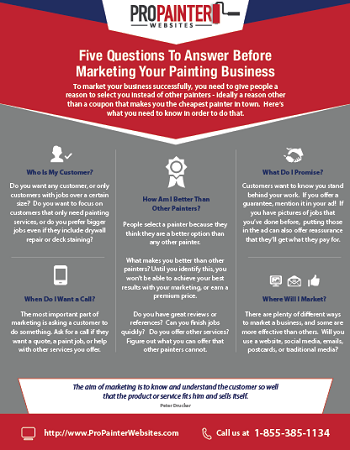When you're intending a business external paint project, seasonal variables can make or damage your results. You'll want to think about how temperature and moisture effect paint application and drying out times. Choosing the ideal season can ensure your paint sticks effectively and lasts much longer. Yet which seasons are genuinely the most effective for this type of job? Allow's discover the crucial elements that can influence your job's success.
The Effect of Temperature on Paint Application
When you're planning a business external painting task, the temperature can significantly affect exactly how well the paint adheres and dries out.
Preferably, you intend to paint when temperature levels range between 50 ° F and 85 ° F. If it's also chilly, the paint might not treat properly, causing issues like peeling or cracking.
On the other hand, if it's too hot, the paint can dry too quickly, preventing correct adhesion and resulting in an irregular surface.
You need to additionally consider the moment of day; morning or late afternoon offers cooler temperature levels, which can be much more desirable.
Constantly examine the producer's recommendations for the particular paint you're making use of, as they usually provide advice on the suitable temperature level variety for optimum results.
Moisture and Its Result on Drying Times
Temperature isn't the only ecological aspect that influences your commercial external paint job; moisture plays a significant duty also. High moisture degrees can reduce drying times significantly, impacting the general high quality of your paint job.
When the air is filled with dampness, the paint takes longer to heal, which can bring about concerns like poor bond and a higher threat of mold development. If you're repainting on a particularly damp day, be prepared for prolonged delay times in between coats.
It's essential to monitor regional climate condition and plan appropriately. Preferably, go for moisture levels in between 40% and 70% for optimal drying out.
Maintaining how long can paint last in a can in mind guarantees your task stays on track and supplies an enduring surface.
Best Seasons for Commercial Exterior Painting Projects
What's the very best time of year for your commercial outside painting projects?
Springtime and early loss are typically your best bets. Throughout these periods, temperature levels are mild, and moisture levels are frequently lower, producing ideal problems for paint application and drying.
Stay clear of summer's intense heat, which can create paint to completely dry too rapidly, causing poor bond and finish. Similarly, wintertime's chilly temperatures can hinder correct drying out and treating, risking the longevity of your paint job.
Go for days with temperature levels in between 50 ° F and 85 ° F for optimal outcomes. Bear in mind to inspect the local weather forecast for rainfall, as damp problems can ruin your job.
Preparation around these variables ensures your painting job runs smoothly and lasts longer.
Conclusion
To conclude, planning your industrial outside paint jobs around seasonal factors to consider can make a substantial distinction in the end result. By organizing job during the excellent temperature levels and moisture degrees, you'll ensure better adhesion and drying out times. Keep in https://archeriwgrb.blogsuperapp.com/34916044/determine-the-essential-questions-to-ask-when-working-with-residence-painters-and-uncover-the-insights-for-transforming-your-home-with-a-fresh-application-of-paint to watch on neighborhood weather forecasts and choose the right time of year-- springtime and very early loss are your best bets. Taking commercial painting dfw will assist you attain a long lasting and specialist coating that lasts.
